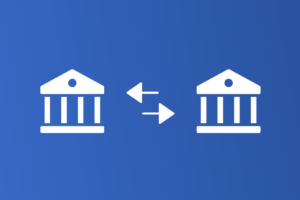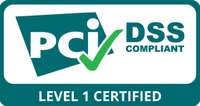More and more SaaS companies are beginning to add payment processing services to their product offerings. There are major benefits to this, as opposed to that of leaving it up to customers to connect their third-party merchant accounts. Integrated payments give platforms more control over their payment experience, are able to streamline the customer payment experience, and create a fresh revenue stream. There are multiple approaches to this, and as software companies investigate how to offer payments, researchers find themselves eventually facing one defining question: “Do we become a PayFac or do we partner with another payment processor?”
In this article, we will explore the steps to both approaches, as well as the pros and cons that come along with each. After reading, you will be equipped with a clear understanding of what it will take, the costs, and which approach is likely going to be the best way to process payments through your own unique platform.
Becoming a PayFac
In short, a PayFac or payment facilitator, is a master merchant that supports sub-merchants. In the scenario of a SaaS company operating as a PayFac, you are the master merchant and your customers are the sub-merchants. Payment Facilitators are 100% responsible for PCI Compliance, risk underwriting, funding and providing payment support. And while Payment Facilitators do retain more control over their payment experience, underwriting and onboarding process, it is also a cumbersome and expensive undertaking. When you consider the costs associated with PCI Level 1 Certification, development time, banking agreements and dedicated resources to support operations, your costs can easily start up at around the $100K mark. By becoming a PayFac, you are also essentially becoming a payment processing company that is responsible for everything.
The Pros
- More control over underwriting and approving merchant accounts.
- Greater customization over the end user experience.
- Ability to set your own pricing.
- Build new features and adopt new payment methods on your own schedule.
The Cons
- Substantial financial commitment starting at $100K+.
- Very large commitment of time and resources.
- Responsible to certify and maintain PCI Level 1 Compliance.
- Assumes all risk of fraudulent activity.
- Implementation time of 6 months-1 year.
Partnering with a payment processor
Your other option is partnering with an existing payment technology company and then coding to their API. This solution works to bypass the heavy lifting of assuming risk, PCI compliance, funding merchant accounts, onboarding, risk underwriting and payment-related support. Integrated payment partnerships will usually involve a revenue share agreement between you and your payment partner. Another benefit of having a payment partnership is the opportunity for cross-branding and marketing, as payment companies are growing their customer base as well, and can suggest your platform to ideal prospects.
There are a lot of payment partners to choose from out there, and with this in mind, it’s important to be sure you do your homework. When you’re looking for a payment partner, try to understand what kind of features are supported in their API (such as recurring billing, hosted payment forms, account updaters, advanced reporting, card-present processing solutions, etc.). If customization is a concern, then ask about the limits of branding your checkout experience, or about what it takes in order to build custom payment flows. A good partner should support your specific needs and work with you to establish a long-term business relationship.
Payment partnerships offer a very low financial commitment, as they have already taken care of their PCI Compliance, banking agreements, risk management and all of the other upfront costs that are associated with becoming a payment technology company. From this point, your only commitment should be the development hours associated with coding to your partner’s API.
The Pros
- Assume zero risk.
- Bypass PCI Level 1 Certification.
- No responsibility for underwriting and onboarding.
- Payment-related customer support is taken care of by your partner.
- Implementation time of 1-3, on average.
- No upfront financial commitment.
The Cons
- Less control over underwriting high risk merchants.
- Less customization over the online checkout experience and design (most partners offer hosted payment fields, to allow for full customization within your environment).
- Some partners may not support desired payment features, and thus a longer discovery process may be required before you are able to choose the right integrated payment processor for your platform.
- Since partnerships are built on revenue share, PayFacs can see more revenue from the processing fees charged to merchants. It’s recommended to compare the costs of becoming a Partner vs. becoming a PayFac.
Conclusion
So if you’re a SaaS company that is planning on adding payment processing as a service, which is the best path to take? It really all comes down to budget, available resources and the processing volume you expect from your customers. If your company is prepared to spend 6-12 months of implementation time, allocate a budget starting at $100K+ and have a customer base processing substantial volume, then becoming a PayFac may very well be a good option for you to bring in serious revenue.
However, if you’re not quite there yet or simply don’t want to take on the task of becoming a PayFac, then working with a Payment Partner is an easy and economical solution. Vet multiple processors, ask about supported features, explore their API documentation and getting an idea of their revenue splits.
If you’re vetting processors now, be sure to check out ECRYPT as a potential payment partner. ECRYPT offers a simple and powerful API to support payment processing for any sales environment, and provides customized integrations to help you create the payment experience you want.



